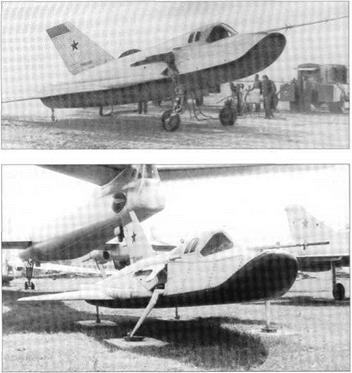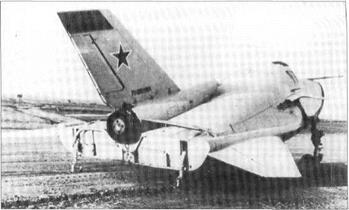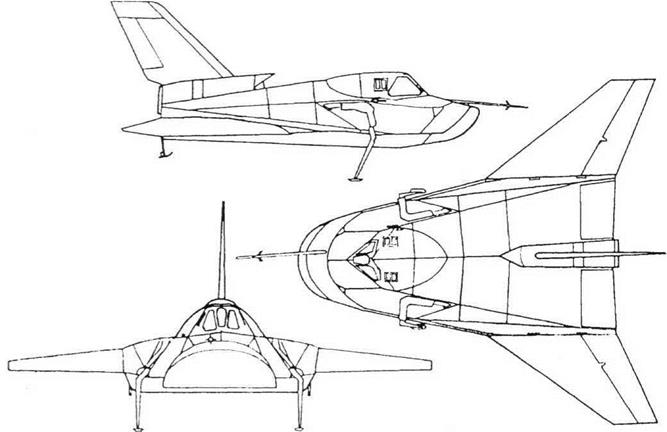MiG 105-11
Purpose: To investigate the low-speed handling within the atmosphere of an orbital shape.
Design Bureau: OKB-155 ofAI Mikoyan.
By 1965 the Mikoyan OKB was deeply into the technology of reusable aero-space vehicles. Under ‘oldest inhabitant’ G Ye Lozino-Lozin – skiy a shape was worked out called BOR (from Russian for pilotless orbital rocket aircraft), and in turn this was the basis for the manned Epos (an epic tale). The BOR test vehicles had been fired by rocket and recovered by parachute, but a manned vehicle had to land in the conventional way. It was considered prudent to build a manned test vehicle to explore low-speed handling and landing. Called 105-11, -12 and -13, only the first is believed to have flown. The OKB pilot was Aviard Fastovets, and he began high-speed taxi tests at Zhukovskii in September 1976. On llth October 1976 he took off and climbed straight ahead to 560m (1,837ft). He landed as planned at an airfield about 19km (12 miles) ahead. On 27th November 1977 he entered 105-11 slung under the Mikoyan OKB’s Tu-95K
(previously used for cruise-missile tests) and landed on an unpaved strip after release at 5,000m (16,400ft). The 105-11 made seven further flights, the last in September 1978. It was then retired to the Monino museum.
The 105-11 was almost the size of a MiG-21, and was likewise a single-jet tailless delta. The fuselage had a broad ‘waverider’ shape, with a flat underside, and the cockpit at the front was entered via a roof hatch. From the sides projected small swept wings with elevens, and there was a large fin and rudder. The engine was an RD-36-35K turbojet derived from the previously used lift engines, rated at 2,000kg (4,409 Ib). It was fed by a dorsal inlet with an upward-hinged door to fair the engine in when in high-speed gliding flight. Features of the eventual hypersonic Epos included a flat unfaired tail end to the broad fuselage, the upper surface comprising large upward-hinged airbrakes, and a structure designed to accommodate severe thermal gradients, though the 105-11 was never designed to fly faster than Mach 0.8. Early testing was done with rubber-tyred wheels on the front two retractable legs and steel skis on
the rear pair (the OKB record that the runway was lubricated by crushed melons). For the air-drop tests all four legs had steel skids.
The brief flights ofthe 105-11 confirmed the design of a manned aero-space vehicle, leading to the Buran (see later).
|
Dimensions Span Length (excluding multi- PVD instrument boom) Area ofwing and lifting body |
6.7m vane 10.6m 24.0 nf |
21 ft 11% in 34ft93/Sin 258ft2 |
|
Weights |
||
|
Empty |
3,500kg |
7,716 Ib |
|
Fuel |
500kg |
1,102 Ib |
|
Loaded |
4,220kg |
9,300 Ib |
|
Performance Maximum speed (design) Mach 0.8 (actually reached) about 800km/h 500 mph Landing speed 250-270 km/h 155-168 mph |
|
|
|
|













